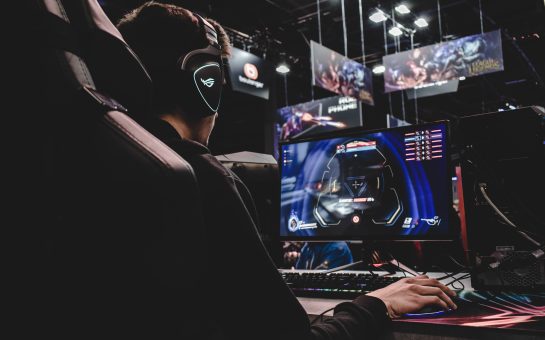The gaming juggernaut which is E3 has wrapped up for another year and VR is once again at the top of the agenda.
Seen as the gateway to a wave of immersive experiences, VR has grabbed the imagination of people around the world and its new showcases recently featured at E3 have once again split the opinion of the masses.
Popular American journalist Mary Pilon has previously said that ‘virtual reality has an exciting future and oodles of room to grow’ – but is this all hype?
MM break down the pros and cons of VR and whether it really is revolutionary.
Virtual by name, virtual by nature. How does VR work?
First and foremost, virtual reality is a simulated experience that creates a 360 environment for the user.
Mostly accessed through the use of a headset and set of biosensors fixated into a suit, a gamer can move and interact with their environment as they play whilst moving, weaving and jumping all through a new world.
The sensor technology inside the headsets and suits record the movements of the user and use it as information to feed back appropriate responses to create a fully functional immersive and personal experience.
In that sense it’s virtual reality.
The debate
Supporters of the technology argue that the features included in VR gives users a sense of freedom that titled franchises have lacked for a long time.
Having played within the confines of finite worlds, VR has opened the possibility of a personalised experience that everyone can experience which, on the face of it, sounds exciting, fresh and new. This initially had long time gaming enthusiasts salivating at the mouth.
Despite this promising uptake into the idea, the initial sales figures and reviews from the market have since suggested that perhaps it is not quite as good as people first thought.
As things currently stand VR is still relatively expensive in what is a flooded gaming technology market. With numerous models still available to consumers, it’s hard to note what you actually get for your money
Previous consoles that have dealt with a similar motion capture, such as the Wii and the Xbox Kinect, all had similar initial trajectories but also lacked a certain something that kept up that interest for a sustained period of time.
Just like in the past, critics have suggested that the lack of high-end graphics have left users disappointed having felt they have been held back from that immersive experience of truly feeling that they have entered the game world.
However, with products being produced every day, components are becoming more accessible and affordable every day. Perhaps it won’t be long before an improvement is seen in the production of such devices, with a high quality VR experience readily available in our own living rooms.
So what is the future of VR?
If E3 proves to be the precedent for which we are basing the future of VR gaming on, then the future certainly looks to be bright.
Top of those wanting to prove the doubters wrong are popular VR innovators Oculus Rift, who made no bones about their plans for future VR centred gaming titles at this year’s event.
One that was certainly eye catching was Stormland – a new collaboration project from the makers of the classic Ratchet & Clank and Spyro the Dragon,which is set to be released at some point next year.
Set in a fantastical robotic inhabited world, the co-op sci-fi shooter brought to viewers what could only be presumed as a classic first-person shooter premise. With all new free movement VR system, it is surely only going to get better as the future progresses.
Another interesting addition to the VR table, away from the classic style of game, came the premiere of Transference, a trippy hybrid game that’s looks to blend the use of cinema and gaming to create a more cinematic style of experience – opposed to the objective based genre that so many of us will have become accustomed to.
Bringing an interactive nod to a horror genre might well even oppose 3D if produced correctly and could be a new genre that makes that immersion just a little bit more up close.
And a final mention at this year’s VR showcase has to go to the classic Tetris reboot that has made the jump into the realm of VR.
Although not the ideal kind of game harden fans were looking for, the classic block based contest will certainly capture the hearts of many an older fan who can relate to the IBM PC version that was revolutionary for its age.
The verdict?
Virtual reality has clearly got a long way to go before it becomes a main stake of a gamer’s armoury, but sure enough it seems to be on its way.
There’s no doubt that the potential is there and even recent showcases suggest that it has legs as a concept due to its endless possibilities.
Providing it doesn’t fall down the same portal-sized rabbit holes that its predecessors did, than we could be seeing something very special in the gaming industry.



